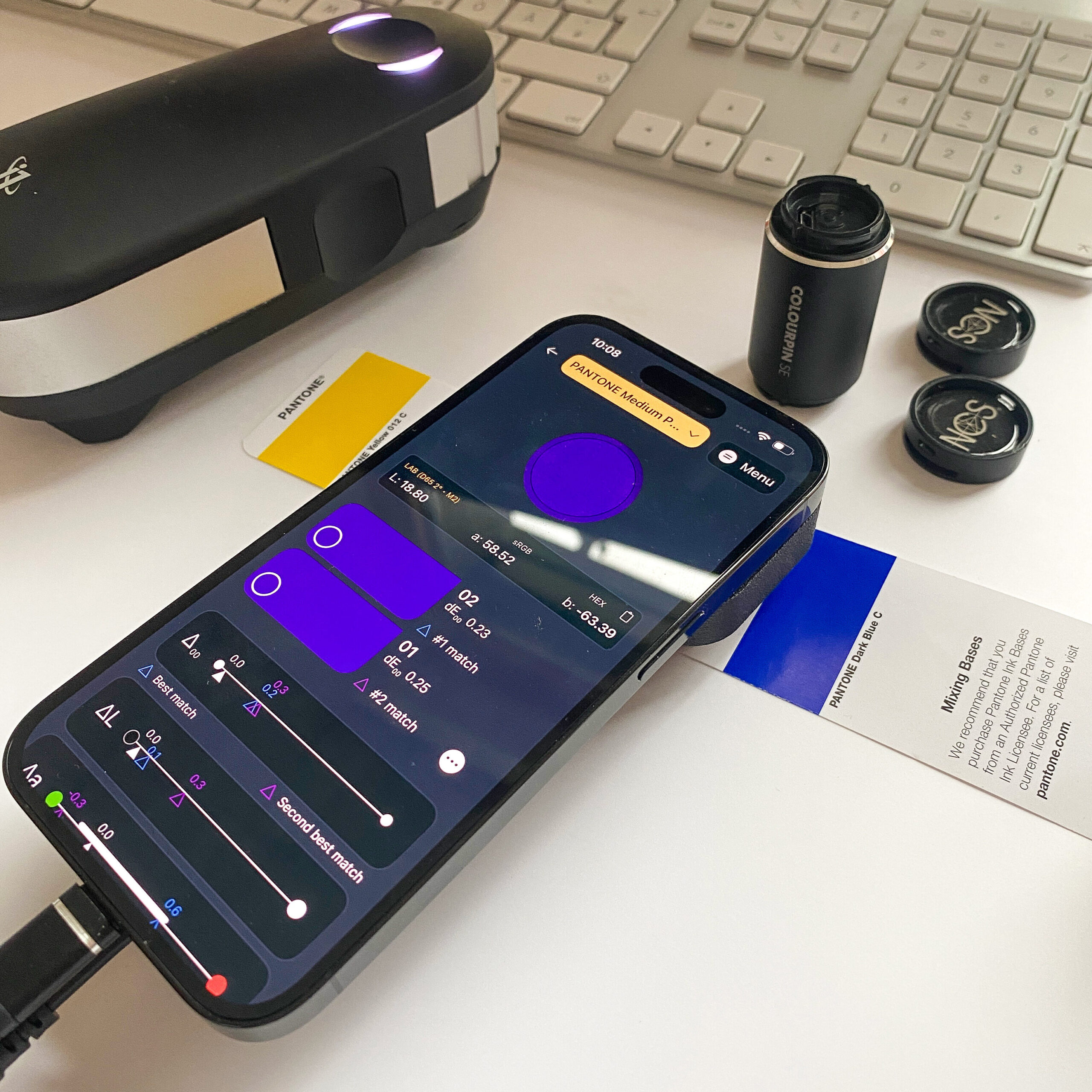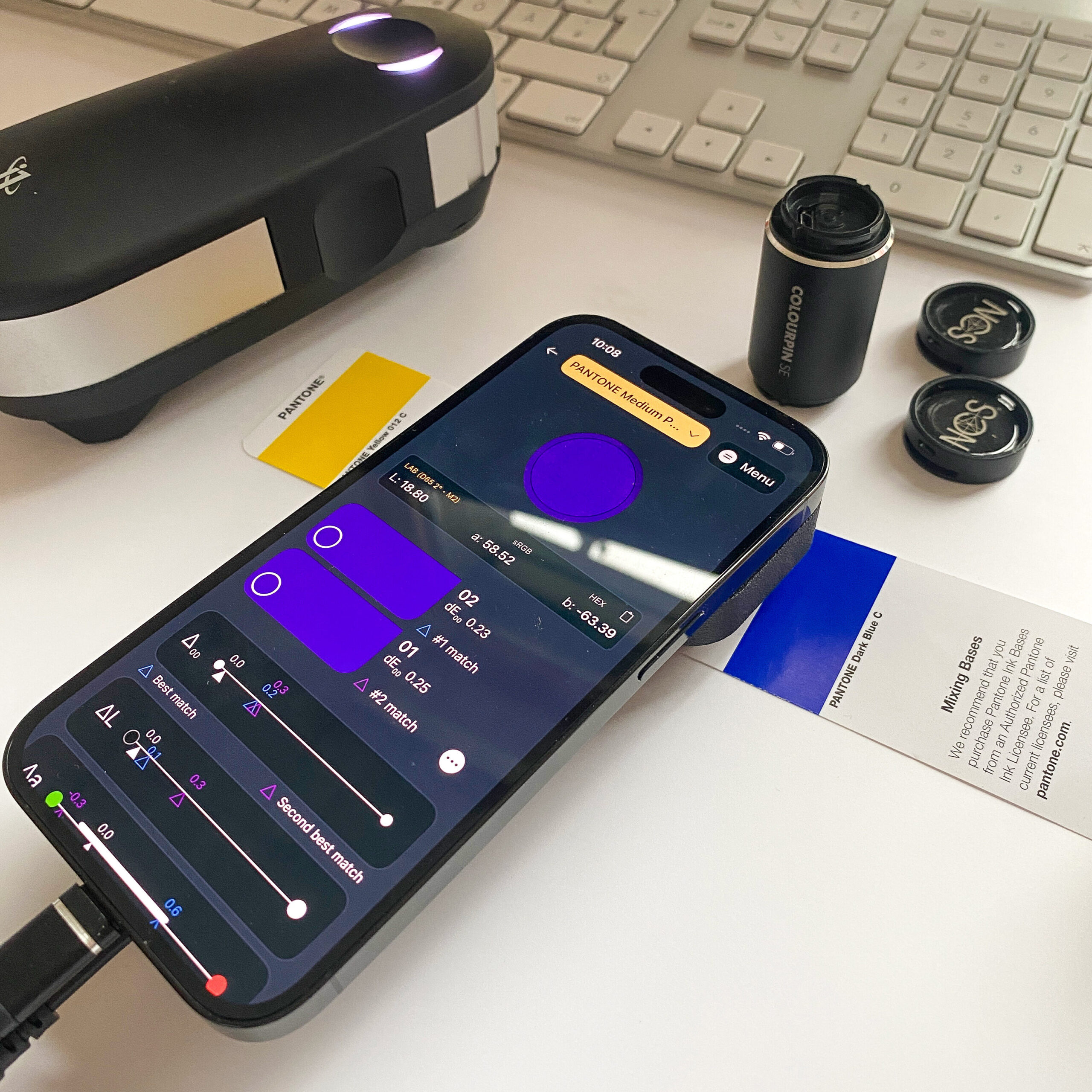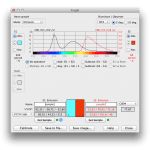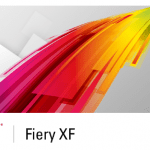A new generation of colour measuring devices is entering the market: in contrast to the classic measuring devices, which are available as a fully encapsulated system either as a colourimeter or as a spectrophotometer, and then supply the data to a computer via an interface or app or display it directly, the new generation of colour measuring devices consist only of lighting and software, with the optics of a modern iPhone from Apple being used as the sensor.
Until now, there have been two categories of measuring devices on the market: on the one hand, precision devices, i.e. spectrophotometers from the industry giants such as X-Rite or KonicaMinolta, and on the other, inexpensive colourimeters or spectral measuring devices such as the NCS Colorpin or the ColorReader from Datacolor, the Colormunki from X-Rite, the NIX measuring devices, which are also available in a spectral version, or the ColorCatch Nano 2.
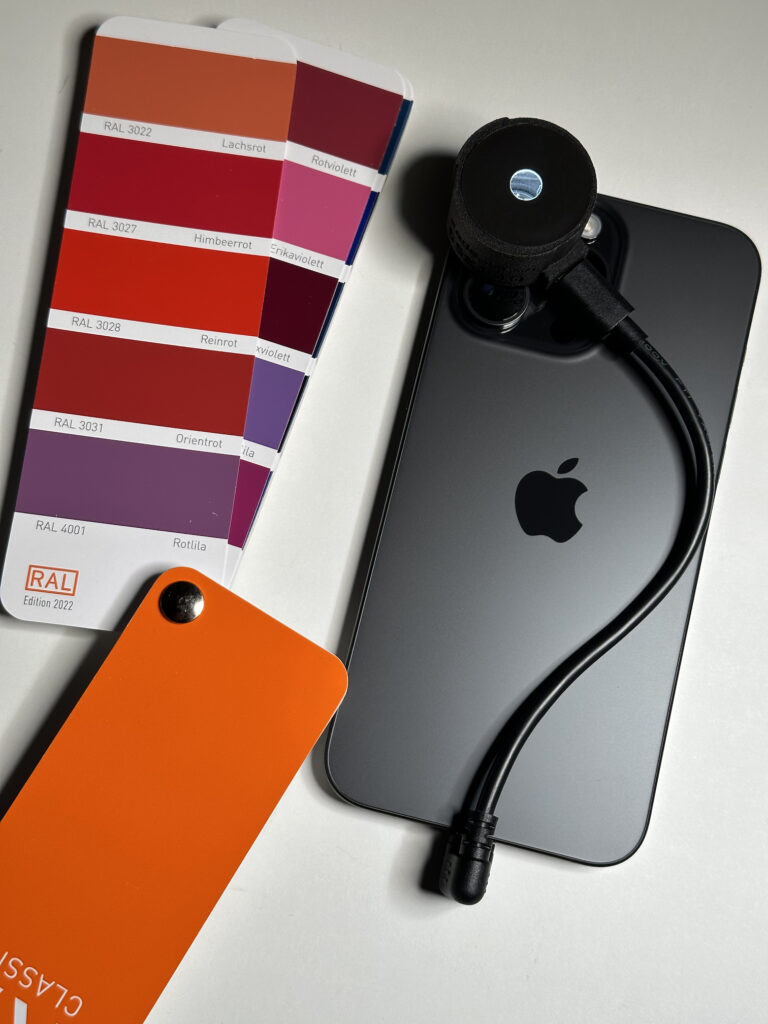
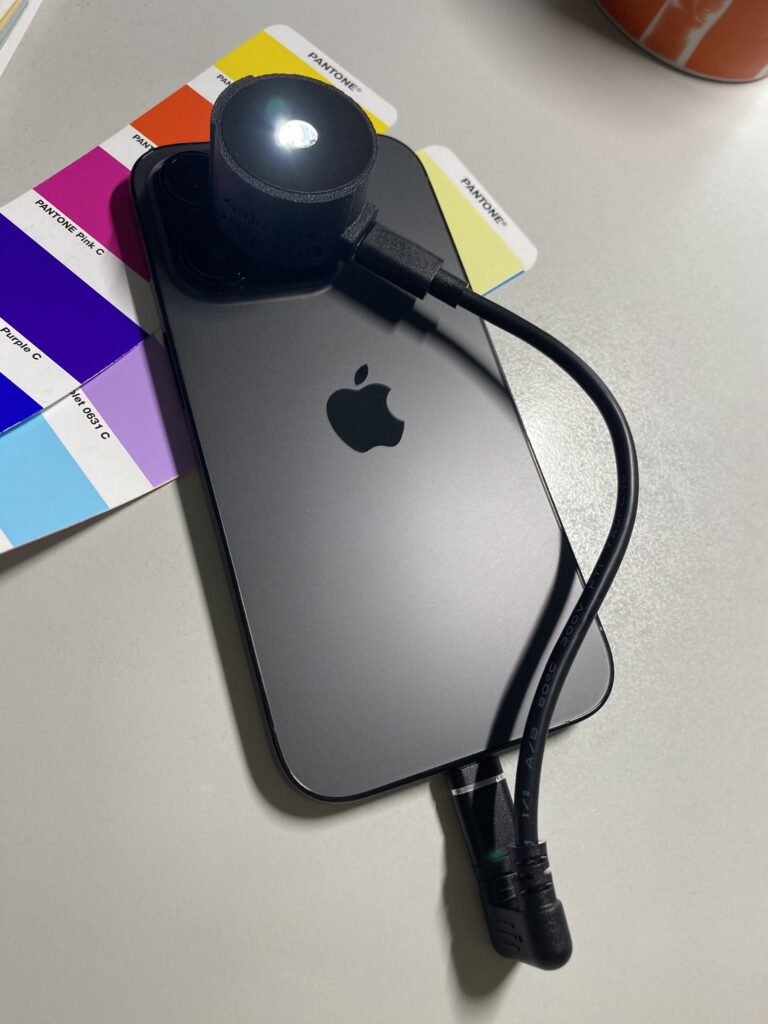
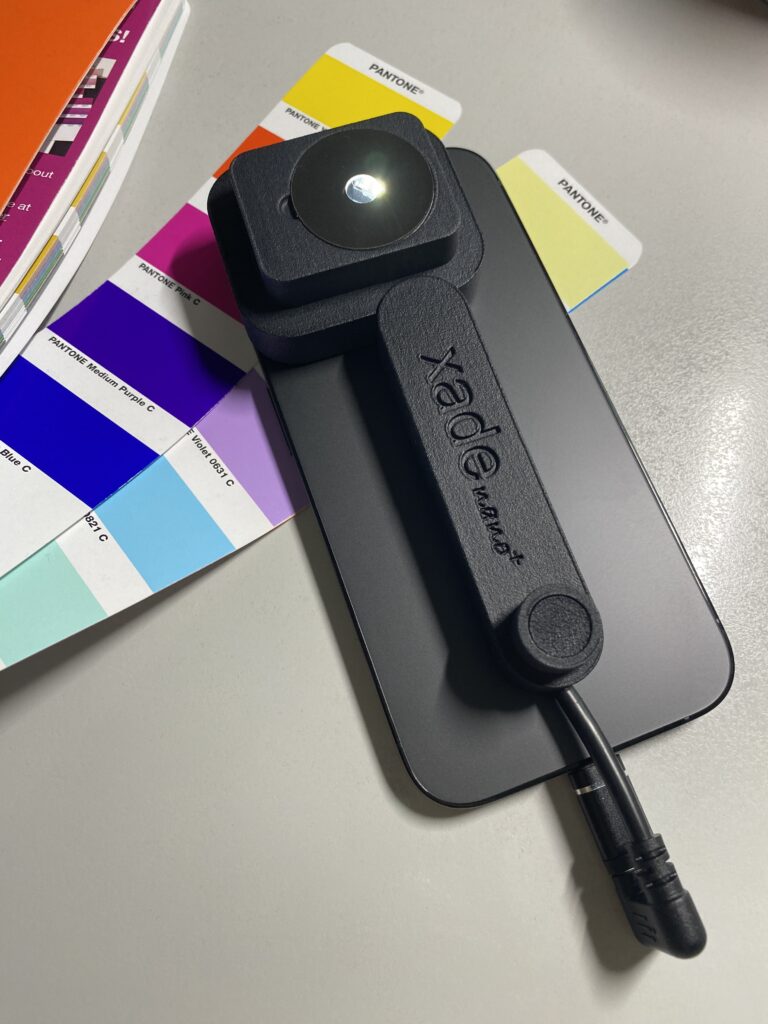
The new iPhone devices are divided into two categories: Firstly, there are devices such as the Colorgrail from France, which classifies itself as a spectrophotometer, and secondly, extended colourimeters such as the xade nano or the xade nano+ from Germany, which is a spectrally extended colourimeter. The colorgrail emits light onto the measuring field through spectrally fanned light sources, then measures the reflection and combines these photos into a spectrum and a measured value. The xade nano+ has four white LED light sources with a high RI of 97 mounted in the housing, illuminating the measuring field and eliminating stray light from the outside thanks to its design. Both devices compete with traditional spectrophotometers, and as we already have an NCS Colourpin SE, it made sense to test the new xade nano+ against an i1Pro2 and the NCS Colourpin SE.
The xade nano+ is simply plugged onto an iPhone 14 Pro or 15 Pro and supplied with power via the Lightning or USB-C port. As it has a direct cable connection with the iPhone, it requires neither an external power source nor a battery, so measurements can be taken anywhere without an additional notebook. It is simply attached to the photo optics of the iPhone Pro and connects magnetically to the iPhone. All functions can be conveniently controlled via an app.
To compare the measuring devices, we measured 5 PANTONE base colours and 7 PANTONE pastel base colours in order to have both saturated and unsaturated tones for comparison. Measurements were taken in D50 2° M2 in each case, although the NCS Colourpin SE does not provide any information on lighting, but an M2 seems plausible.
It goes without saying that the operation of app-controlled measuring devices such as the xade nano+ and the Colourpin SE with the Colourpin app is simple and convenient. However, the xade nano+ showed its best side in the colour deviations compared to a measurement with an X-Rite i1Pro2. On average, the colour deviations of Ø-DeltaE00 were only 1.34 compared to the X-Rite device; with the similarly priced Colourpin SE, these values were more than three times as high at Ø-DeltaE00 4.25. This shows how well the new smartphone optics of the mobile phones match each other and how well they can be controlled and read out with new lighting and software.
Colour measurement: xade nano+ against i1Pro2 and NCS Colourpin SE
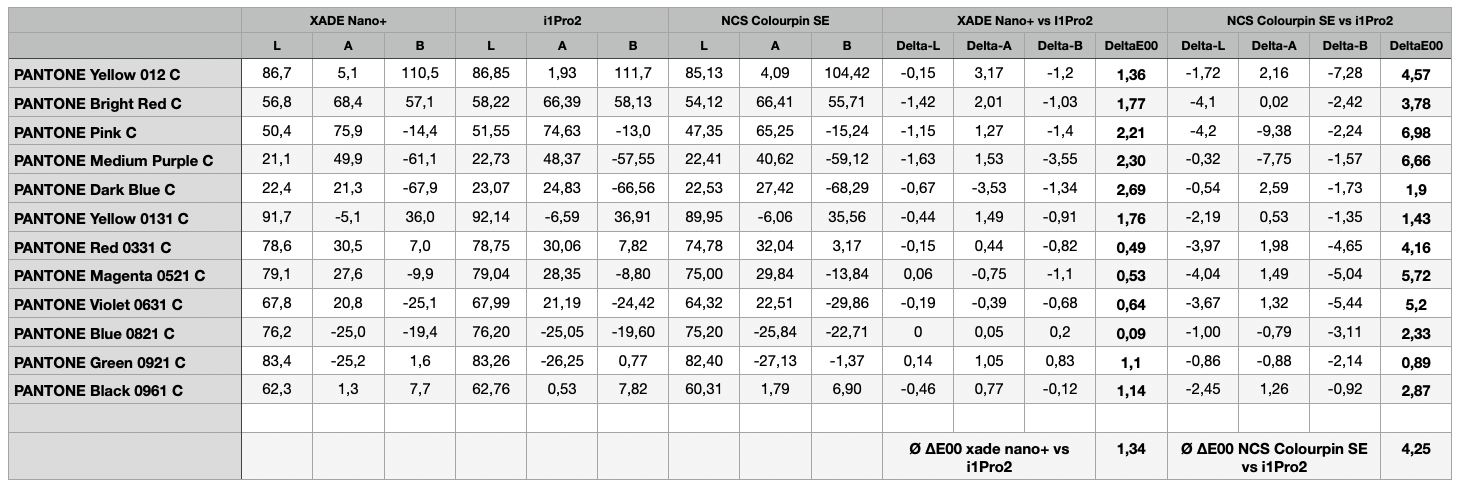
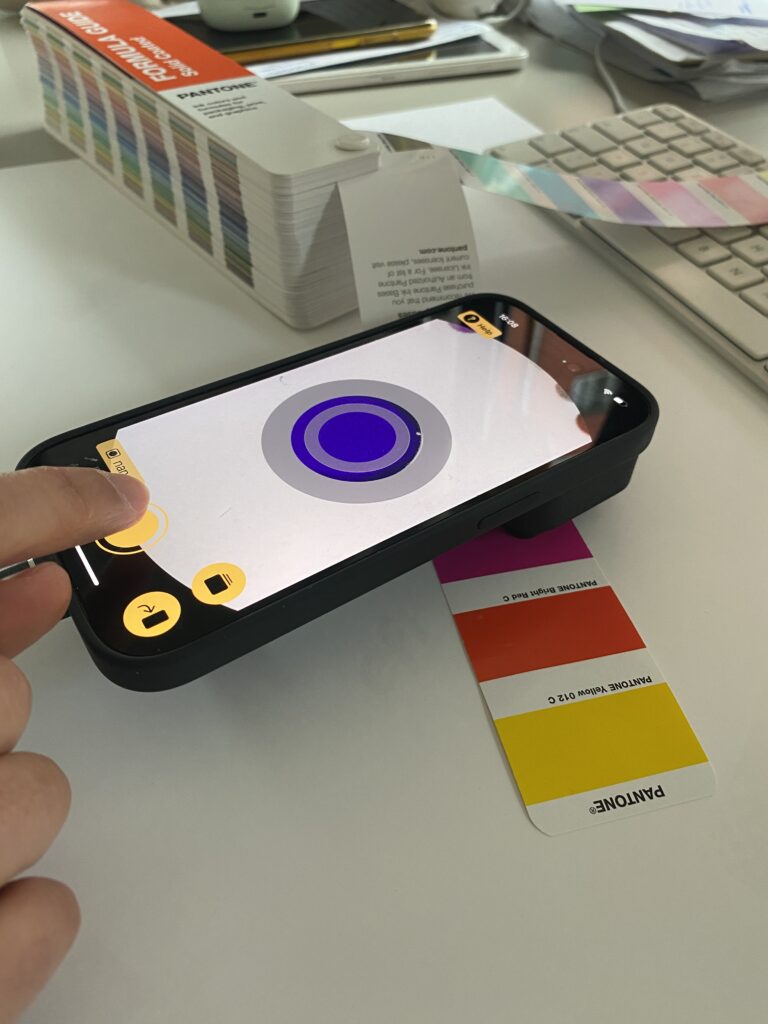

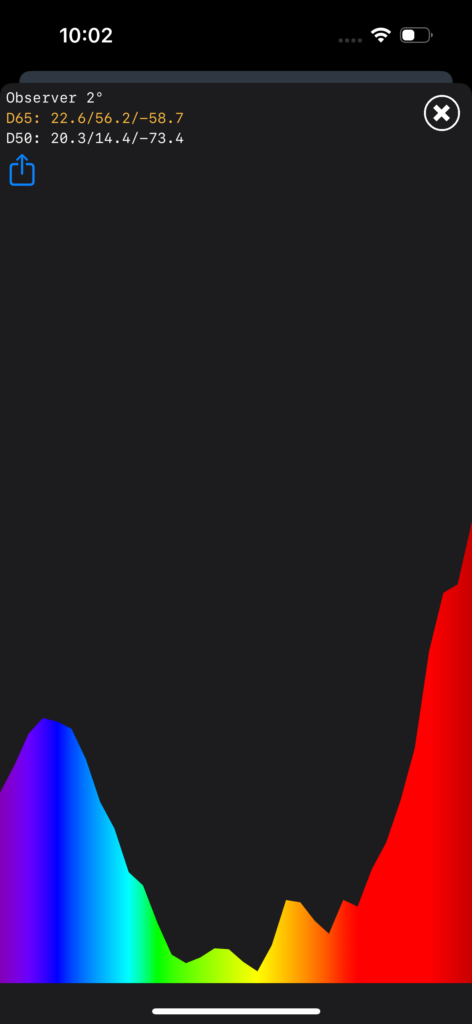
With a simple click on the Measure button, the colour fan is measured and is available as a measurement a few seconds later. The measured values for D50 can then be read in the spectral view.
Selection of the measured variable
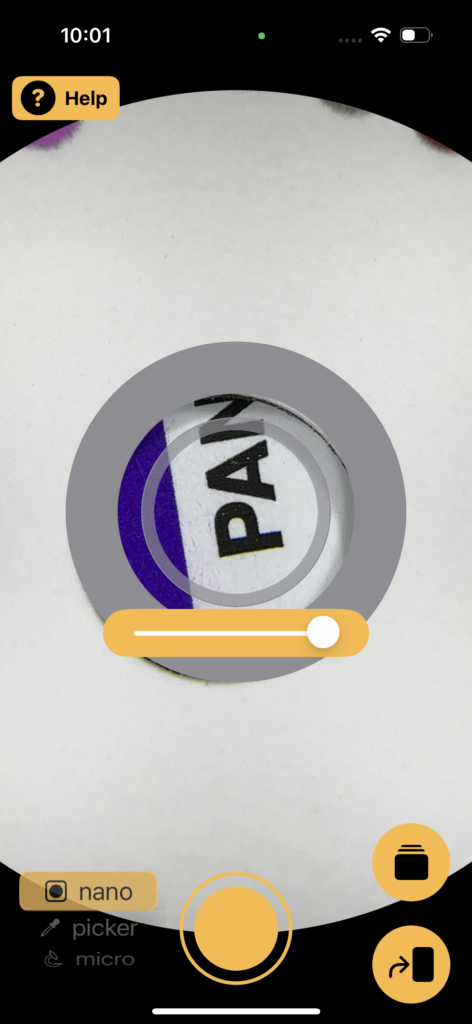
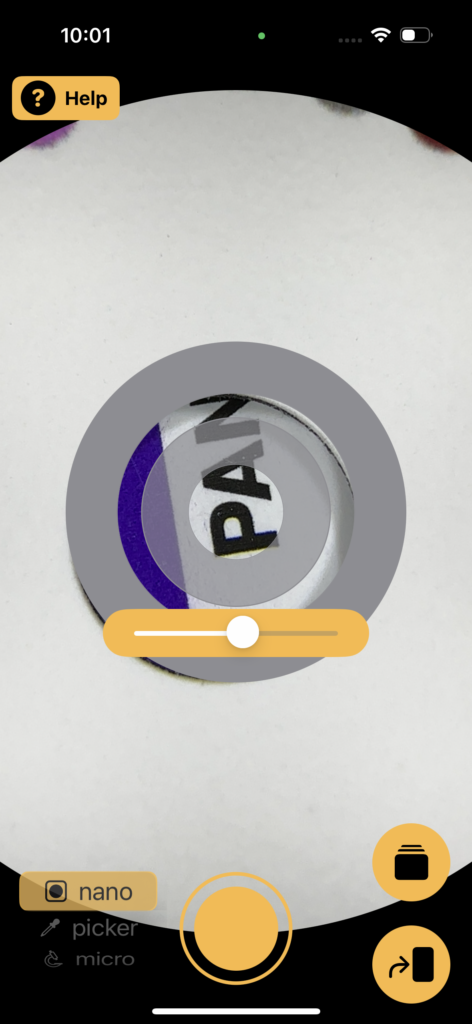
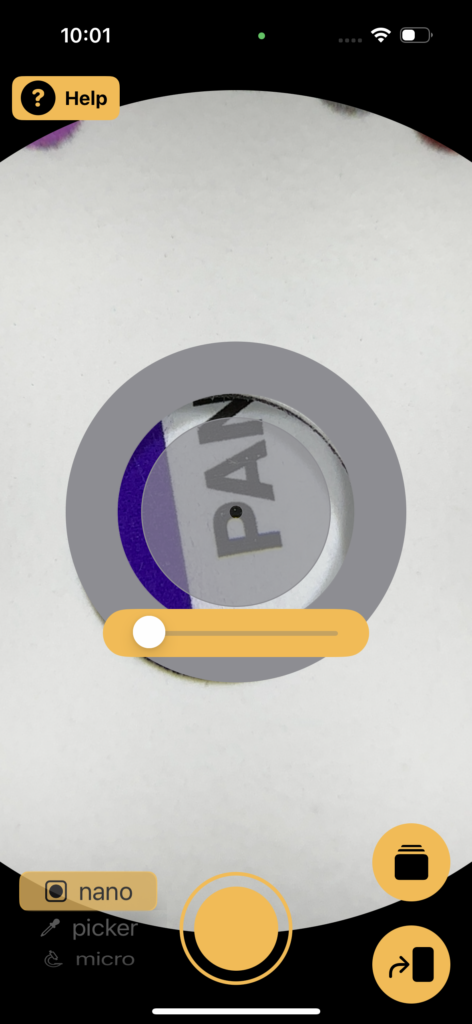
A particularly impressive feature of the xade nano+ is that the size of the measuring aperture can be flexibly defined. This means that either a large colour range can be captured or, with the smallest measuring aperture on the right, only the black text of the PANTONE text under the fields of the colour fan can be included in the measurement.
Measuring optics
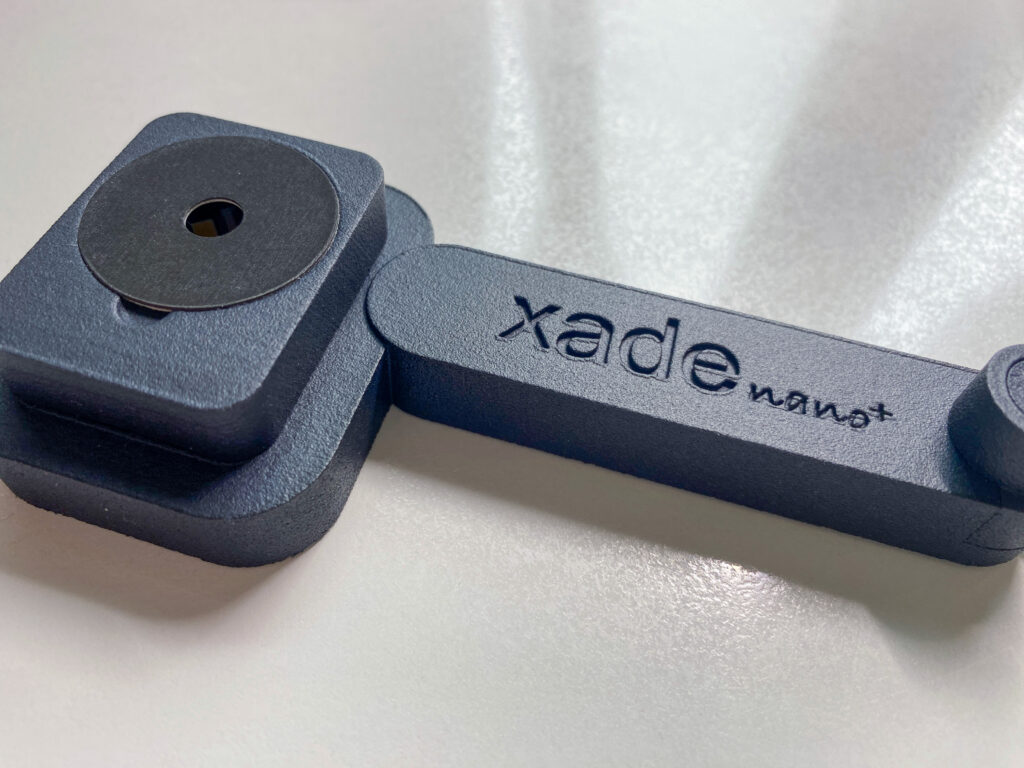
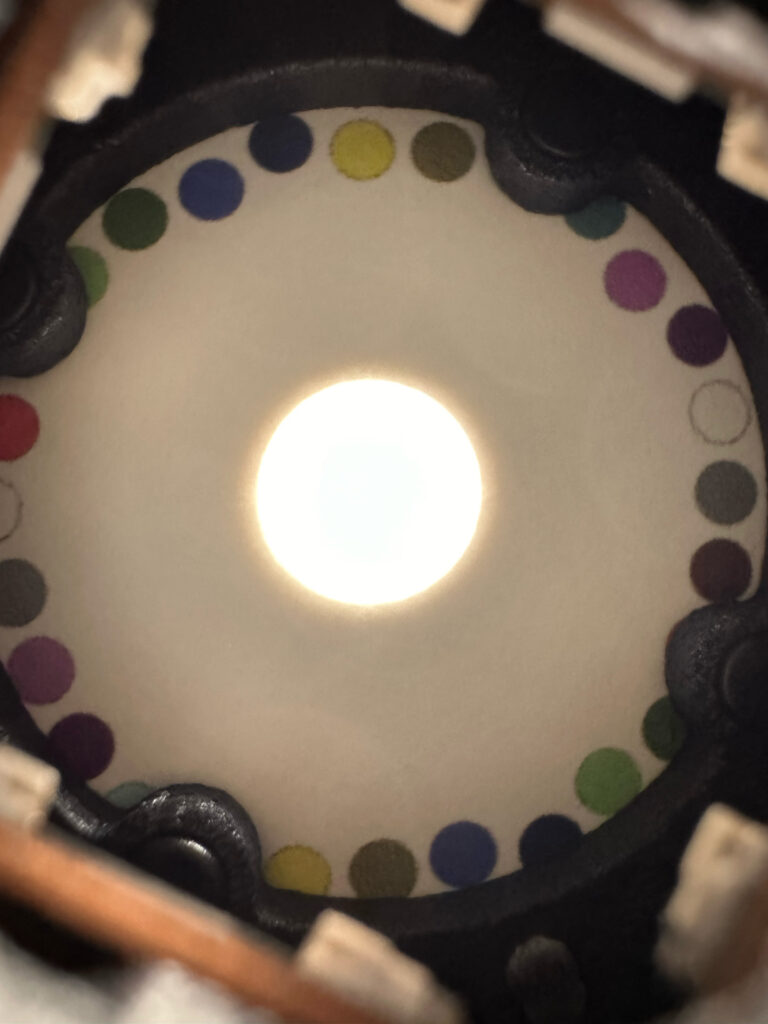
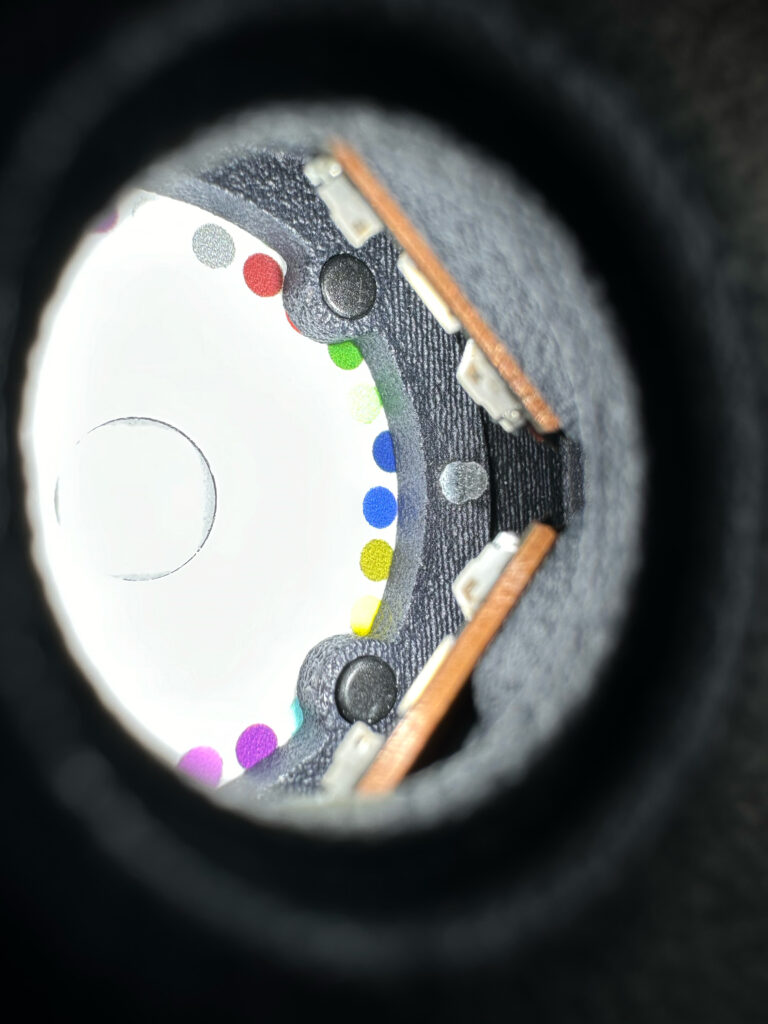
The top of the xade nano+ is an illumination unit with 4 integrated LEDs and a white plate on which coloured dots are presumably attached to calibrate the xade nano+. The xade nano+ on the left, in the centre the opening photographed from above with the LED switched off, on the right the illuminated opening photographed at an angle.
Microscope function
For me, the new optics of the current iPhone Pro generations are an absolute phenomenon. The xade nano+ can also be used for magnification, for example, and is able to reach zoom ranges and resolutions that were previously only possible with a small microscope. This can also be a useful application in everyday printing, allowing you to quickly zoom in on a raster or an increase in line thickness.
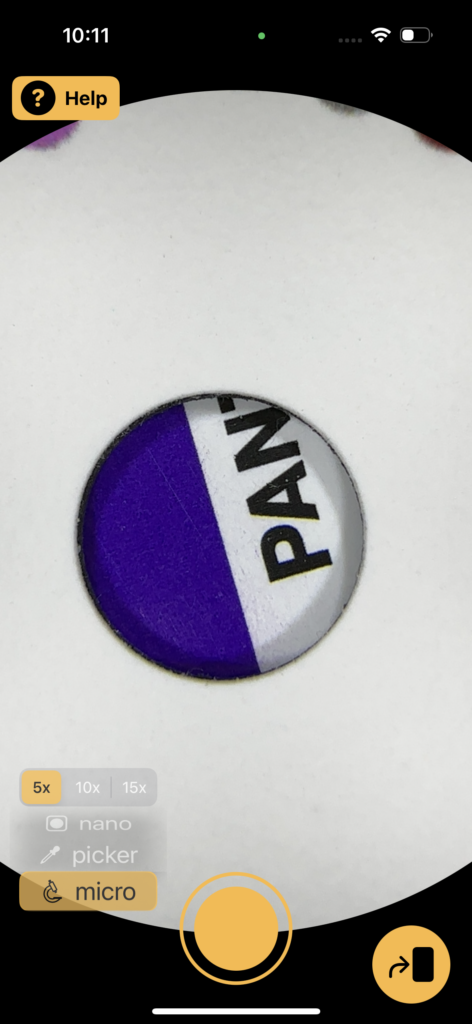
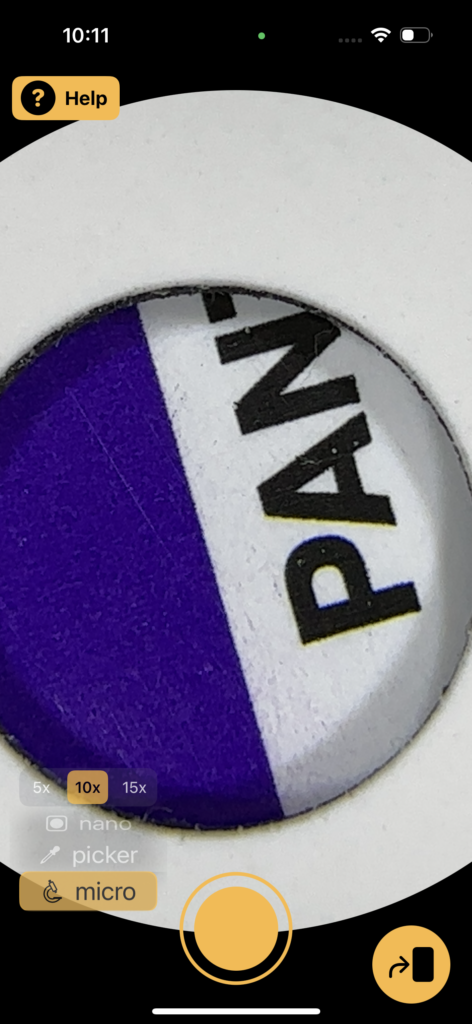
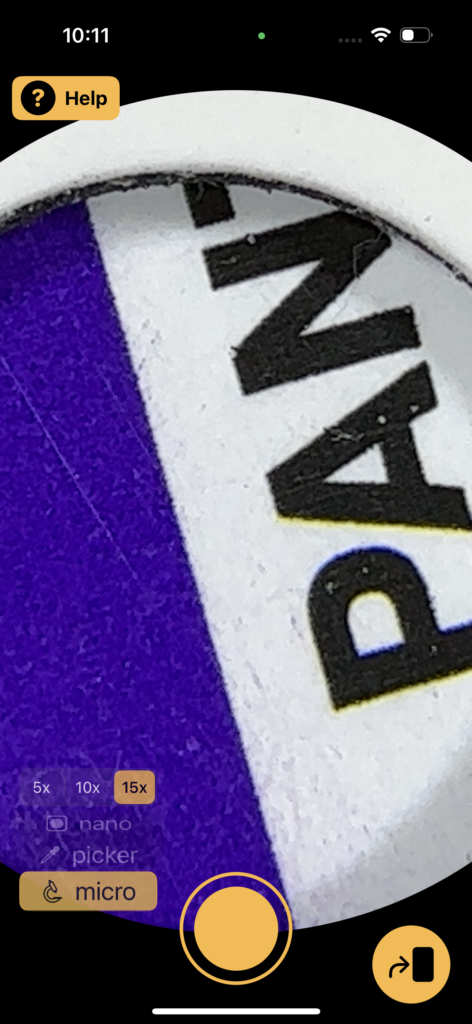
Batch measurement and scan measurement
Not so exciting for us, but certainly very useful for some users: the xade nano+ also has a batch mode that allows you to take numerous measurements in succession without having to wait for the result; the app processes and saves the measurements in the background, which can then either be viewed or exported as json. In scan mode, the nano+ captures the surface over which it is moved for five seconds after a tap on the screen. This is helpful for unstructured surfaces in order to obtain a good average value.
Conclusion
The xade nano+ was a real surprise for us, as the colour measurement values were very close to the much more expensive i1Pro2. Even in dark and saturated areas, the measurements were surprisingly accurate to those of the i1Pro2 and significantly better than the comparably priced competitor from NCS. As both the device and the software app are still under constant development, it will be interesting to see what further ideas and functional enhancements xade can come up with.

